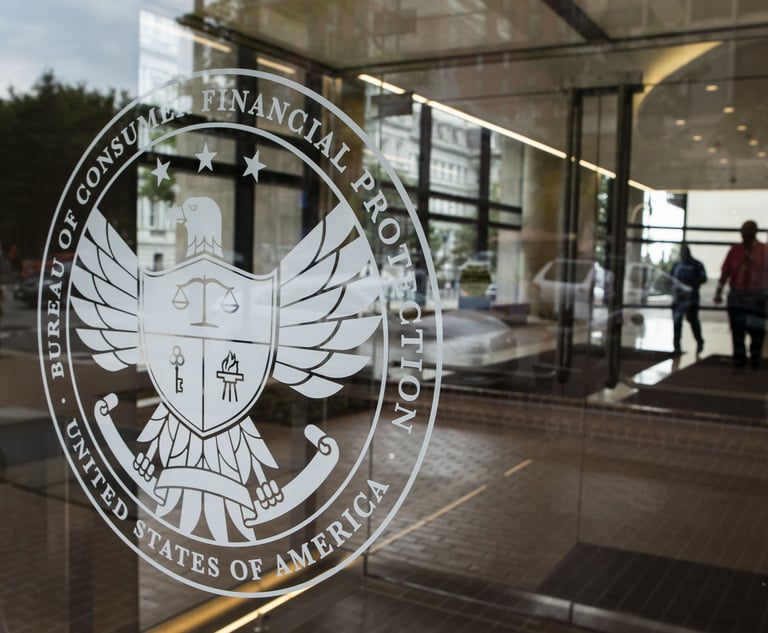Is Cyber Insurance a Modern-Day Imperative?
This article discusses the increasing risks of data breaches and the option for cyber insurance. It describes cyber insurance, highlights recent cyber insurance cases involving "hostile or warlike action" policy exclusions, and discusses the future of cyber insurance as the catalyst for higher data security standards.
September 30, 2022 at 02:00 PM
8 minute read
 Getting hacked is almost as certain as death and taxes. If a company hasn't been hacked yet, it probably will be. If a company has been hacked, they can expect to be hacked again: In IBM's 2022 "Cost of a Data Breach Report," 83% of victims reported they were hacked more than once. Data breaches are not limited to Fortune 500 companies. Due to the proliferation of hackers, the low cost of hacking kits, and the universal addiction to data, virtually all enterprises are at risk. Even small businesses, like one-person retail operations, have suffered from and will remain subject to ransomware and data breaches.
Getting hacked is almost as certain as death and taxes. If a company hasn't been hacked yet, it probably will be. If a company has been hacked, they can expect to be hacked again: In IBM's 2022 "Cost of a Data Breach Report," 83% of victims reported they were hacked more than once. Data breaches are not limited to Fortune 500 companies. Due to the proliferation of hackers, the low cost of hacking kits, and the universal addiction to data, virtually all enterprises are at risk. Even small businesses, like one-person retail operations, have suffered from and will remain subject to ransomware and data breaches.
In this article we will discuss the increasing risks of data breaches and the option for cyber insurance. We will describe cyber insurance, highlight recent cyber insurance cases involving "hostile or warlike action" policy exclusions, and discuss the future of cyber insurance as the catalyst for higher data security standards.
Losses From Data Breaches
The financial costs of data breaches are staggering. When combined with potential lost customers and reputation damage, the total cost mandates that prudent companies take all reasonable precautions. According to IBM, the global average cost of a data breach is $4.35 million, and $9.4 million in the United States. The pandemic only made things worse. When employees work from home, they often access company data at non-secure locations on unprotected devices. On average, data breach costs were $1 million more expensive when remote work was a factor. With 44% of companies allowing remote work, the risks only increase.
This content has been archived. It is available through our partners, LexisNexis® and Bloomberg Law.
To view this content, please continue to their sites.
Not a Lexis Subscriber?
Subscribe Now
Not a Bloomberg Law Subscriber?
Subscribe Now
NOT FOR REPRINT
© 2025 ALM Global, LLC, All Rights Reserved. Request academic re-use from www.copyright.com. All other uses, submit a request to [email protected]. For more information visit Asset & Logo Licensing.
You Might Like
View All
NYAG’s Enforcement of Mandated Cybersecurity Safeguards Sends Expensive Shock Waves through Varying Industries
9 minute read

Law Firms Mentioned
Trending Stories
- 1Which Legal Tech Jobs Are on the Rise, and Which Aren't, with Jared Coseglia
- 2Absent Explicit Agreement, Court Rejects Unilateral Responsiveness Redaction of Text Messages
- 3SEC Whistleblower Program: What to Expect Under the Trump Administration
- 4Sidley Hires Paul Hastings Energy Finance Partner in Houston
- 5Potential Pitfalls in Arbitrating Religious Disputes
Who Got The Work
J. Brugh Lower of Gibbons has entered an appearance for industrial equipment supplier Devco Corporation in a pending trademark infringement lawsuit. The suit, accusing the defendant of selling knock-off Graco products, was filed Dec. 18 in New Jersey District Court by Rivkin Radler on behalf of Graco Inc. and Graco Minnesota. The case, assigned to U.S. District Judge Zahid N. Quraishi, is 3:24-cv-11294, Graco Inc. et al v. Devco Corporation.
Who Got The Work
Rebecca Maller-Stein and Kent A. Yalowitz of Arnold & Porter Kaye Scholer have entered their appearances for Hanaco Venture Capital and its executives, Lior Prosor and David Frankel, in a pending securities lawsuit. The action, filed on Dec. 24 in New York Southern District Court by Zell, Aron & Co. on behalf of Goldeneye Advisors, accuses the defendants of negligently and fraudulently managing the plaintiff's $1 million investment. The case, assigned to U.S. District Judge Vernon S. Broderick, is 1:24-cv-09918, Goldeneye Advisors, LLC v. Hanaco Venture Capital, Ltd. et al.
Who Got The Work
Attorneys from A&O Shearman has stepped in as defense counsel for Toronto-Dominion Bank and other defendants in a pending securities class action. The suit, filed Dec. 11 in New York Southern District Court by Bleichmar Fonti & Auld, accuses the defendants of concealing the bank's 'pervasive' deficiencies in regards to its compliance with the Bank Secrecy Act and the quality of its anti-money laundering controls. The case, assigned to U.S. District Judge Arun Subramanian, is 1:24-cv-09445, Gonzalez v. The Toronto-Dominion Bank et al.
Who Got The Work
Crown Castle International, a Pennsylvania company providing shared communications infrastructure, has turned to Luke D. Wolf of Gordon Rees Scully Mansukhani to fend off a pending breach-of-contract lawsuit. The court action, filed Nov. 25 in Michigan Eastern District Court by Hooper Hathaway PC on behalf of The Town Residences LLC, accuses Crown Castle of failing to transfer approximately $30,000 in utility payments from T-Mobile in breach of a roof-top lease and assignment agreement. The case, assigned to U.S. District Judge Susan K. Declercq, is 2:24-cv-13131, The Town Residences LLC v. T-Mobile US, Inc. et al.
Who Got The Work
Wilfred P. Coronato and Daniel M. Schwartz of McCarter & English have stepped in as defense counsel to Electrolux Home Products Inc. in a pending product liability lawsuit. The court action, filed Nov. 26 in New York Eastern District Court by Poulos Lopiccolo PC and Nagel Rice LLP on behalf of David Stern, alleges that the defendant's refrigerators’ drawers and shelving repeatedly break and fall apart within months after purchase. The case, assigned to U.S. District Judge Joan M. Azrack, is 2:24-cv-08204, Stern v. Electrolux Home Products, Inc.
Featured Firms
Law Offices of Gary Martin Hays & Associates, P.C.
(470) 294-1674
Law Offices of Mark E. Salomone
(857) 444-6468
Smith & Hassler
(713) 739-1250







